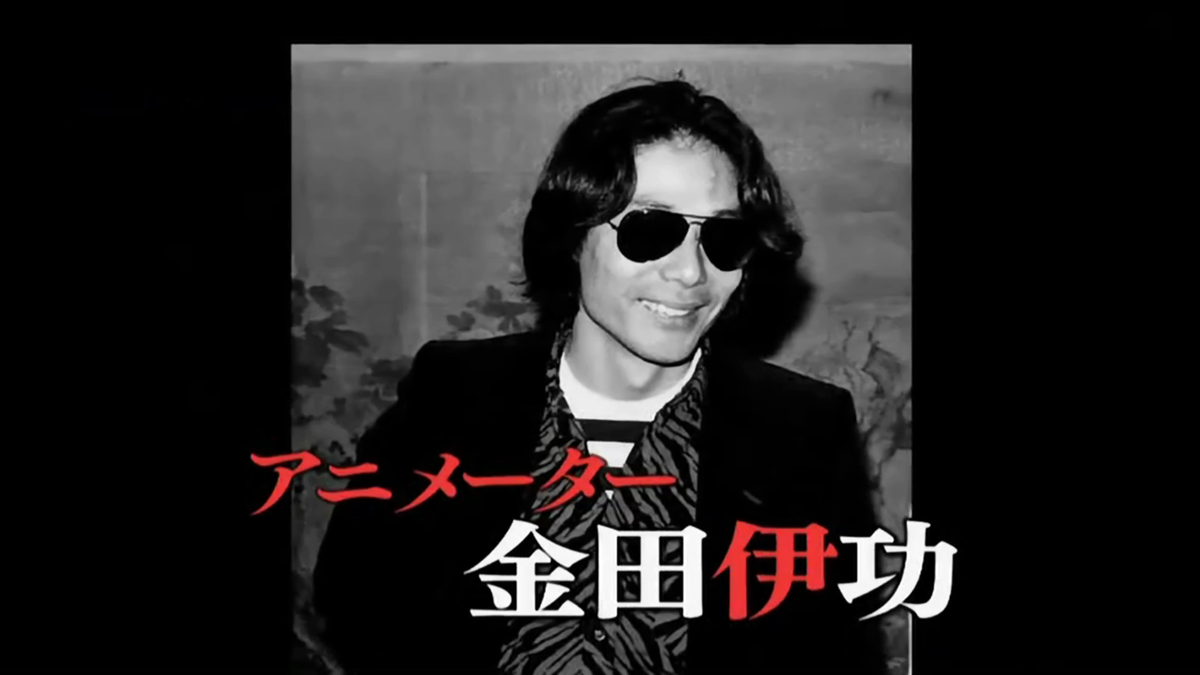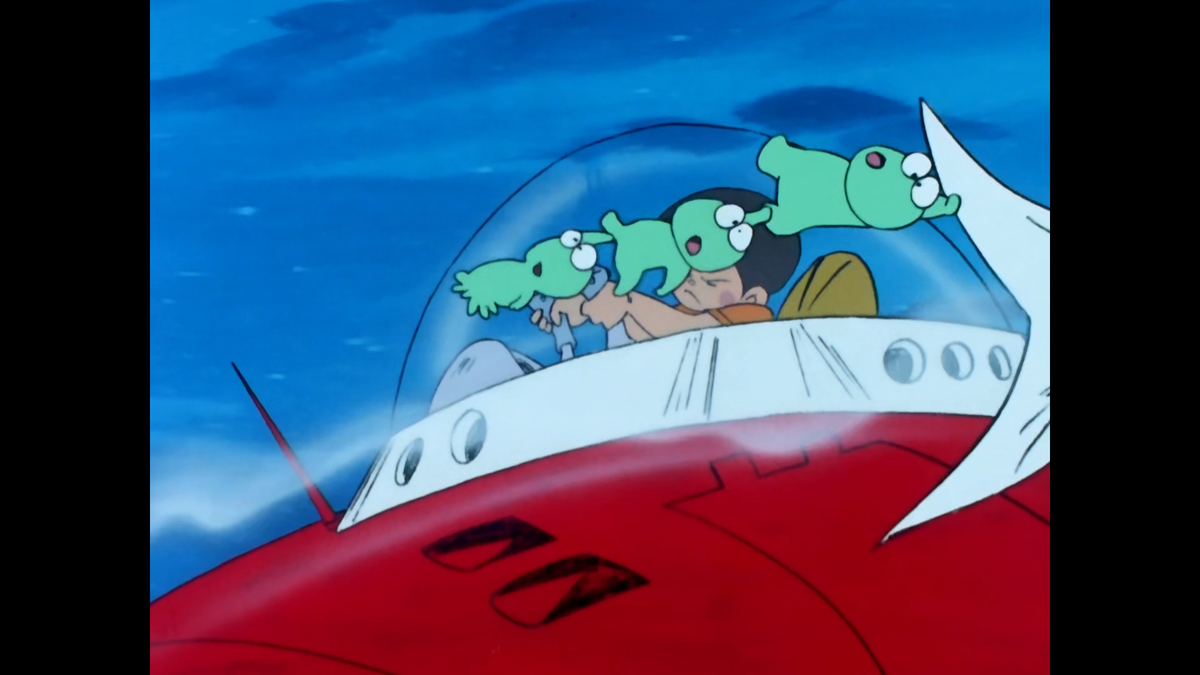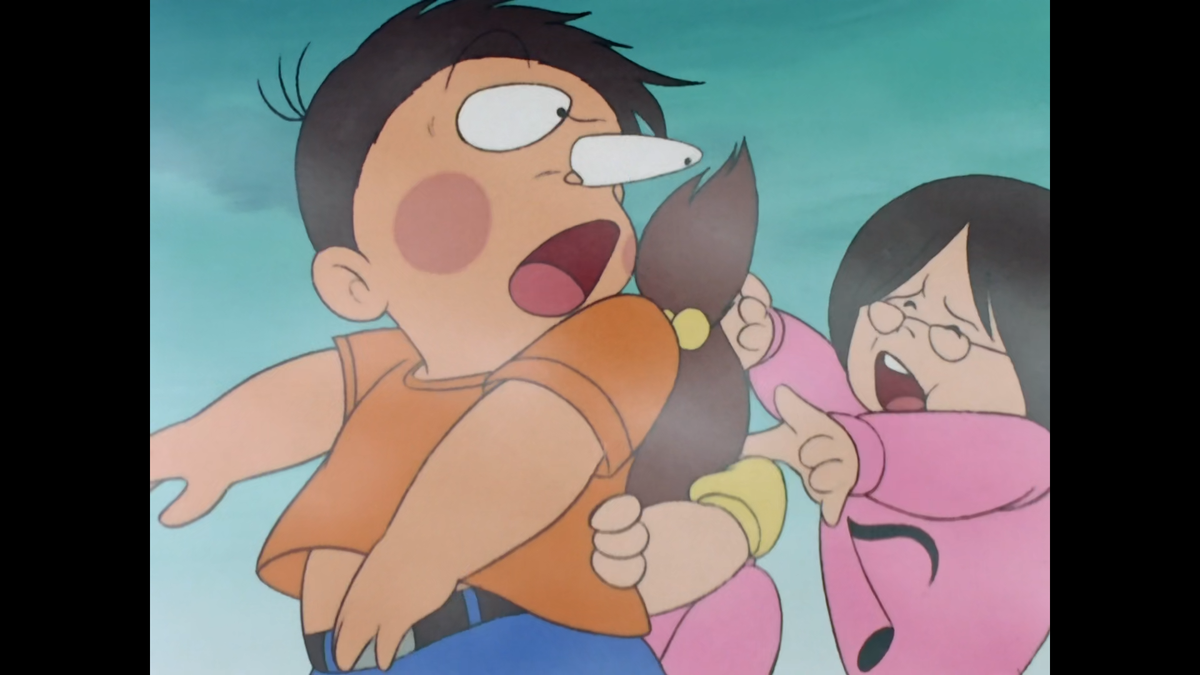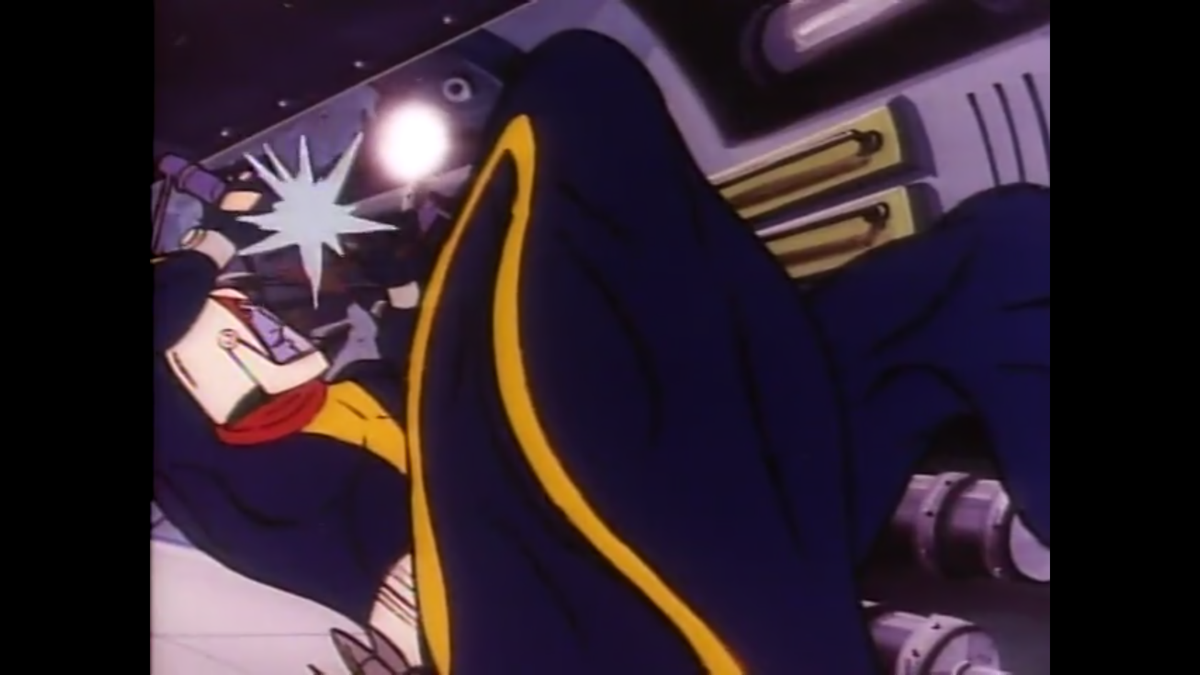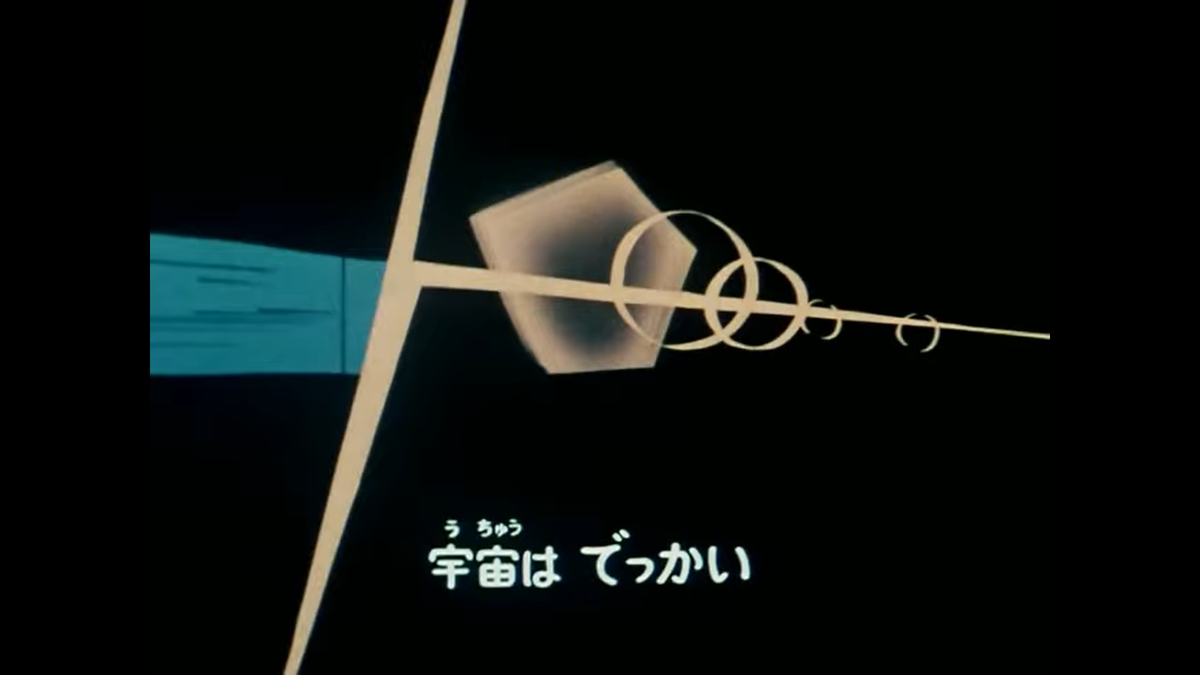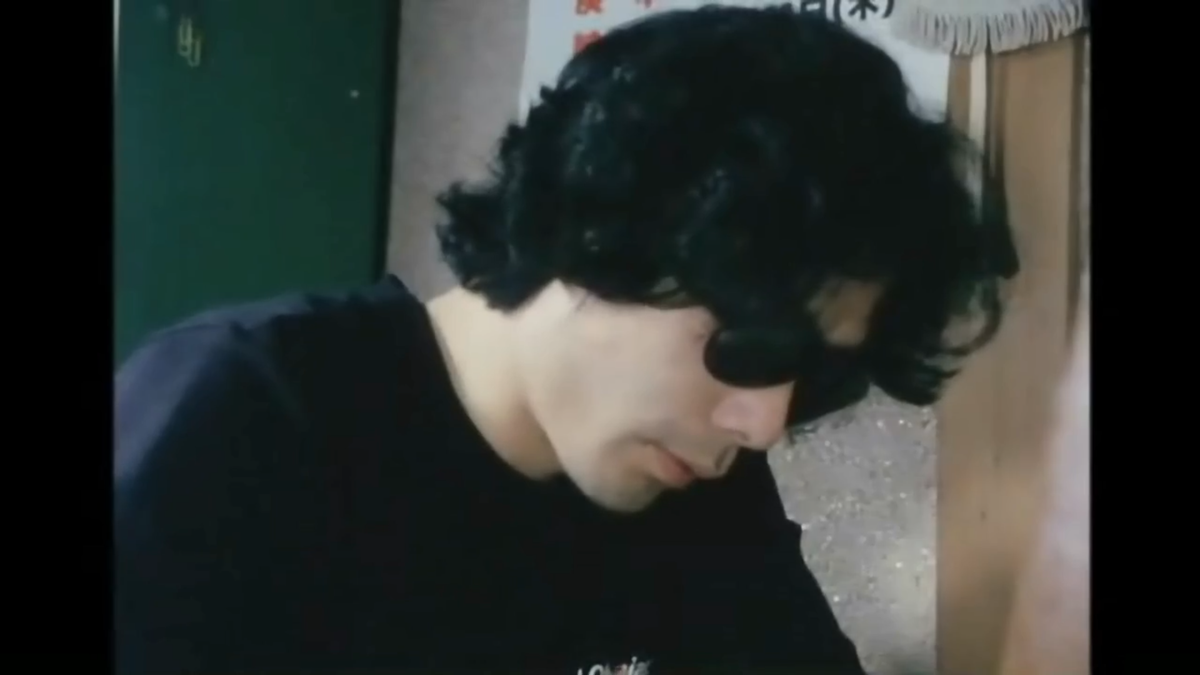If you’ve been following me for some time, you may be aware I’m the biggest Yoshinori Kanada fan on this website. And today’s the anniversary of his death - the best occasion to celebrate his work and share some of my favorite cuts from one of Japan’s best animators !
#金田伊助
#金田伊助
I’m gonna do this chronologically, so let’s start with Kanada’s two most important influences
The first is Keiichiro Kimura, whose rough, geometrical and nervous animation was a very obvious influence. In this cut you can see his characteristic rough lines and bold camera angles
The first is Keiichiro Kimura, whose rough, geometrical and nervous animation was a very obvious influence. In this cut you can see his characteristic rough lines and bold camera angles
The second influence, less noted, is from the A Pro/Otsuka school of animation : it’s alongside them that Kanada started in the 70’s, on shows like Akado Suzunosuke or Gutsy Frog. That’s where he must’ve learnt the playful attitude that’s a pillar of his style
In these shots from Kanada’s Zambot 3 #16 you can see what looks like a Gutsy Frog easter egg, as well as cartoony facial expressions that wouldn’t be out of place in Gamba no Bouken or Ganso Tensai Bakabon
I’d say Kanada’s 1st period goes from 1972 (his first KA work) to 1979. He mostly worked on super robot shows and naturally specialized in character/mecha animation, fields where he introduced his trademark poses and perspectives
It’s a really interesting period bc you can see his style growing - see these screenshots from Cutie Honey (73), Getter Robo (75) and Danguard Ace (77). I haven’t seen everything he did back then but that last shot may be one of his first uses of the impact frame + flare combo
By 1977 Kanada’s style has become his own: e.g. this solo OP for the Voltes V anime. You have all his trademark techniques : lightning-like effects, speed lines, bold perspectives and poses - but also a great sense of realism and weight in the handfight sequence
Then comes his first big masterpiece - his episodes on Tomino’s Zambot 3. You really have to see them in context to realize how different they look from the rest of the show, and how easy it was for him to get recognized as an animator with a vision of his own
In this cut, you see Kimura’s influence the most: heavy linework, geometrical shapes and a LOT of speedlines which makes it all rough and powerful. The emotion is raw and intense, to the point where the man’s eyes are glowing from anger
Also worth noting are the light flares
Also worth noting are the light flares
This one is more playful, and shows Kanada’s sense for character expressions and most notably timing. Everything speeds up at once but you can still follow the action as the characters all adopt strong key poses emphasized by the tilted camera which helps make it all more dynamic
The same year, he did this in Danguard Ace. You find the flares once again, and you see him experimenting w/ effects : beams and explosions. He even tries out different kinds in this single sequence- liquid-like fire with a lot of color and rounder ones with rougher lines
Daitarn 3,1978. Always experimenting, Kanada probably introduced the use of black impact frames in anime - but here he goes even further with onomatopoeia on the screen !
It’s also impressive how he managed to convey the weight and size of the big toys that are super robots
It’s also impressive how he managed to convey the weight and size of the big toys that are super robots
For me, Kanada’s second period, his maturity, starts in 1979. It’s not like his style fundamentally changed that year, but that’s the year he made some of his most influential work : the Cyborg 009 OP and the Galaxy Express 999 climax
Between 1979 and 1997, Kanada became more famous and started his famous associations w/ 2 great directors : Rintarô and Miyazaki
Accordingly, he worked on more movies as time went by and started to shift from character to effects animation
Accordingly, he worked on more movies as time went by and started to shift from character to effects animation
This period is pretty much his golden age : that’s when he did some of his most famous work and notably developed the Kanada dragon. The key moment would be 1984, where both Birth, the Kanada school’s manifesto, and Nausicäa of the Valley of the Wind were released
Cyborg 009, 1979. This isn’t his most flashy work, but there sure is a lot of emotion. The gentle expression and the sad one of the hero at the end manage to be touching with very little actual mvt
The showcase of all the other abilities is also evocative and full of detail
The showcase of all the other abilities is also evocative and full of detail
Galaxy Express 999, w/ K. Tomonaga, 1979. His effects take on a different scale as he creates depth and mvt only through red yellow and brown. The approach of shading also becomes more radical and in perfect complementarity w/ Rintarô’s style, the frame becomes full of colors
Terra E, 1980. This cut is a perfect follow-up to the previous one - the approach of color and lighting is the same. But what’s amazing is the complete mastery of 3D mvt - the background animation sequence (one of Kanada’s first) is just a wonder and one of his boldest moments
Zukkoke Knight, 1980. Kanada’s solo ep on that show is him at his maddest and most playful. Limbs and eyes fly off the characters’ faces, the mvt are as exaggerated as possible, the scenario looks completely absurd - but you find again the background animation prefiguring Birth
Space Battleship Yamato III, 1981. Yet another proof that Kanada never stopped trying new things. There’s not much to say about this cut, except that the explosion at 00:18 is absolutely insane and I don’t know anything like it
Sayonara Galaxy Express 999, 1981. One of his most famous cuts. The way he creates mvt and depth with pure color shows his genius and limitless creativity. The shapes of the smoke and flares are constantly unique - like many of his cuts, it’s so rewarding to watch frame by frame
Same. Even though he had found a formula to create dynamic explosions, Kanada never stopped changing them - this time they take triangular, V shapes. The impact frames also become more pronounced and always stronger, becoming black, yellow and even purple
This is one of his absolute best works, and the sense of depth he creates with the train and beams are phenomenal - same with the lighting
There’s also a nice Zukkoke Knight cameo, proof of the man’s neverending playfulness even in this apocalyptic scene
There’s also a nice Zukkoke Knight cameo, proof of the man’s neverending playfulness even in this apocalyptic scene
Galaxy Cyclone Braiger, 1981. This, right here, is phenomenal timing. The way the three characters slow down as they go away from the camera, all the while taking strong poses at an irregular rhythm, is exemplar Kanada
Genesis Climber Mospeada, 1983. What this cut shows is that there’s not one field of animation that Kanada didn’t master. He effortlessly plays w/ the multiplanarity of the image to create dense shots, fluid transitions, and mvt that’s as dynamic as ever
Harmaggedon, 1983. Kanada’s finale for this movie is an absolute masterpiece and I don’t think words will ever do it justice. Suffice to say it’s the pinnacle of a career that had only started 10 years before. He still had 26 to go
Birth, 1984. Ok, this one is too long for twitter - so let me just say that this is some of the best background animation ever known to man https://www.sakugabooru.com/post/show/8206 ">https://www.sakugabooru.com/post/show...
Nausicäa, 1984. Yet more bg animation ! The explosion on this one looks very different - almost too round for Kanada. However, I don’t even think that’s bc of corrections, as Miyazaki corrected him very little. If Kanada himself changed his style, it& #39;s yet another proof of genius
Laputa, 1986. Another Miyazaki film - this time not fire, but lightning dragons.
The fact that Kanada’s style comes off so clearly here, even under Miyazaki, shows both his talent and the mutual respect they had for each other as fellow animators
The fact that Kanada’s style comes off so clearly here, even under Miyazaki, shows both his talent and the mutual respect they had for each other as fellow animators
Hi no Tori Hôô Hen, 1986. The lighting effects here are out of this world - as if Kanada had already transcended the fire dragons and decided to try something new, pure lines instead of color, encouraged by Rintarô’s sensibility for lighting
My Neighbour Totoro, 1987. Ok, I’m only sharing this one bc it’s damn cute. But let’s appreciate the complexity of the animation - the bg and all the legs of the cat running
Porco Rosso, 1992. One thing about Kanada’s cuts on Miyazaki movies is that they’re rarely his most flashy, but always among his most intricate - the tridimensionality of the planes and their mvt is simply astounding
Talking Head, 1992. I have no idea what’s going on here, but it’s super fun. The diversity of references here speaks to Kanada’s humour, culture and curiosity - he was a globe trotter after all and traveled all around Asia and Japan
We’re now entering Kanada’s last period, from 1994 to his death in 2009. Formally, it’s marked by a return to character animation and an even more radical approach of mvt and timing, sometimes very close to Hiroyuki Imaishi’s
In terms of works, Kanada was a bit ostracized from TV production and mostly worked on OVAs and video games, even experimenting with CG at the very end of his life - with very mixed results
The first big work of this last period is the Lucky Man OP. The key poses become simpler, but even more marked, and their mvt more frantic and playful. The timing is central here, but it all has an air of fluidity and ease which contrasts heavily w/ his first period
On the side of effects, as we’ll see in other cuts, they become remarkably simpler : the shapes are very angular and they tend towards monochrome (red, orange or yellow) - a simplicity which makes me like this later Kanada a bit less
Legend of the Crystals, 1994. This very short one is another demonstration of Kanada’s sense of timing - it feels snappy, energetic and powerful
Yu Yu Hakusho Movie, 1994. One of his best cuts, ever. The 3D mvt is mastered w/ incredible ease, the key poses are the strongest they’ve ever been and the lighting and effects are perfect
Mamono Hunter Yoko, 1995. A good illustration of his new approach of effects. But what’s so remarkable is the way characters move across the frame, from left to right, away and towards the camera…
X/999, 1996. The Kanada dragons are back, and quite different - but always as good. The monochrome approach works very well here as some dragons are green instead of read or yellow. The moment when they fly away and change into flowers is amazing
Darkstalkers, 1997. Kanada’s timing is snappier than ever, and the perfect fit for this video game adaptation - it conveys perfectly the stilted rhythm of the attacks while making them feel as powerful as possible
Princess Mononoke, 1997. Miyazaki’s corrections seem to have gotten heavier w/ time, but one thing he couldn’t take away was the prodigious sense of timing - this feels sudden, fast and violent
Hanjuku Hero 3D, 2003. While the CG has aged quite a bit, its interaction w/ the 2D animation is pretty much perfect. It tends to show that, maybe, Kanada’s hopes and experimentations w/ CG weren’t completely misdirected
Hanjuku Hero 4, 2005. Kanada’s last masterpiece, 4 years before his death. As playful as ever, this cut is just exploding with mvt and energy as characters run and jump around w/ impressive trails of angular smoke following them
Yoshinori Kanada died on 21 July 2009 of a heart attack, at the age of 57. My personal theory is that it could’ve been karoshi (death from overwork), but I guess we’ll never know
Last but not least, let’s remember Kanada as someone who was so cool he didn’t even take off his sunglasses when drawing. According to legend, the only one who could make him take them off was Miyazaki
All the cuts from this thread have been taken from the booru and referenced there ; for more on his life and career, I encourage you to watch the Kanada documentary which is, I believe, available on the usual cat website

 Read on Twitter
Read on Twitter